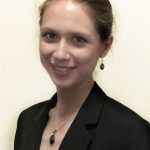This report by the Education Policy Institute (EPI) examines entries to arts subjects at Key Stage 4 (KS4) over the past decade.
This covers a period of considerable change to school accountability measures, including the introduction of the English Baccalaureate (EBacc) and of Progress 8. The report draws on data covering arts subject entries by KS4 cohorts between 2007 and 2016. It also includes comparisons between different regions, and variations by pupil characteristics, such as gender, socio-economic status, and prior attainment.
Arts qualifications are defined as those relating to: art and design; drama and theatre; media, film, and TV studies; music; dance; and performing arts.
You can read the full report here.
Key Findings
Overall trend
- Entries to arts subjects by KS4 cohorts have declined over the past couple of years, following several years of gradual increases, with the 2016 entry rate falling to the lowest of the decade:
- the average number of arts entries per pupil fell from 0.80 in 2013 to 0.70 in 2016; this followed an increase from 0.75 in 2010.
- the proportion of pupils taking at least one arts subject declined from 57.1 per cent in 2014 to 53.5 per cent in 2016. Again, this followed an increase from 55.6 per cent in 2010.
- If the same proportion of pupils had taken at least one arts entry in 2016 as in 2014, then around 19,000 more pupils would have taken an arts subject.
- Provisional data relating to 2017 exam entries indicate that the decline is continuing.
Drivers behind this trend
As part of this report, the EPI gathered evidence directly from teachers and school leaders, and combined this with evidence from published government data. This led to the following conclusions:
- EBacc, Progress 8, and wider financial issues were regarded by participants as placing pressure on arts entries. The picture is mixed, however, with the impact depending the school’s context, and whether school leaders prioritise arts subjects.
- The EBacc element of Progress 8 is a particularly important factor affecting arts entries, as it limits the number of option subject slots that can be filled by non-EBacc subjects. In 2016, the year that Progress 8 was first used across all schools, the proportion of pupils entered for four EBacc components rose by 10.8 percentage points, compared to a 1 percentage point increase in the proportion of pupils entered for the full EBacc. Schools currently appear to be entering pupils for a greater number of EBacc subjects, but not in a way that is increasing the proportion that are entered for the full EBacc.
- However, Progress 8 also provides an element of protection for arts subjects, because it includes three slots which can be filled by a variety of subjects including the arts. Therefore, schools which achieve high grades in arts subjects are incentivised to continue to offer them.
- Existing research has found that pupils at schools which substantially increased their EBacc entries showed higher average attainment in GCSE English and maths, along with lower probabilities of leaving education after the age of 16.
Pupil characteristics and regional trends
Regional findings:
- There is a consistent north-south divide in entries to arts subjects, with southern regions showing higher entry rates than northern regions. In 2016, the proportion of pupils entering at least one arts subject ranged from 57.3 per cent in the South West to 47.8 per cent in the North East
Pupil characteristics findings:
- There is a large gender gap in entries to arts subjects. In 2016, 64.7 per cent of girls took at least one arts subject, compared with 42.5 per cent of boys, a gap of 22.3 percentage points.
- Since 2014, pupils eligible for free school meals (FSM) have been slightly more likely to enter at least one arts subject than their peers. In 2016, 53.9 per cent of FSM pupils, compared with 53.4 per cent of non-FSM pupils, took one arts subject.
- At the start of the decade, pupils with special educational needs and disabilities (SEND) were much less likely to enter at least one arts subject. This has now reversed, with SEND pupils now marginally more likely to have at least one arts entry, with 53.9 per cent doing so in 2016, compared with 53.4 per cent of their peers.
- There are substantial gaps in arts entries between pupils from different ethnic backgrounds. For example, Black Caribbean pupils have particularly high entry rates, whilst pupils from Indian and Pakistani backgrounds are much less likely to have at least one arts entry.
- Pupils who speak English as an additional language (EAL) have lower entry rates to arts subjects than their peers. In 2016, 48.8 per cent of EAL pupils entered at least one arts subject, compared with 54.3 per cent of non-EAL pupils.
- Before 2013, pupils with high prior attainment were more likely than those with medium or low prior attainment to enter at least one arts subject. Those with medium or low prior attainment are now more likely to have at least one arts entry. In 2016, the gap was 3.5 percentage points – 54.4 per cent for pupils with medium and low prior attainment, compared with 50.9 per cent for those with high prior attainment.
- Pupils who enter the EBacc are less likely to take at least one arts subject than those who do not. In 2016, this gap stood at 7.3 percentage points (56.5 per cent for pupils who do not enter the EBacc, compared with 49.2 per cent for those who do).
- Therefore, although EBacc entrants are less likely to take an arts subject, nearly half of them nevertheless do so.

